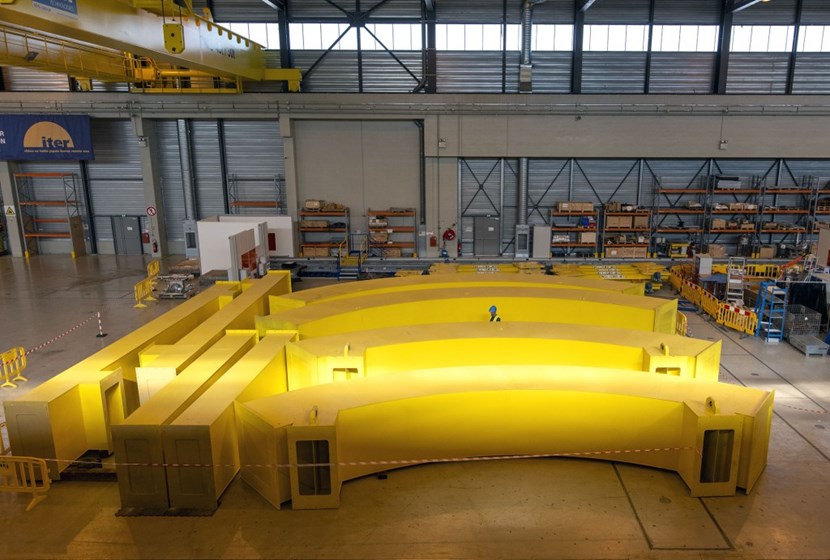ITER NEWSLINE
-
On site
There goes the unique spreader beam
On site | There goes the unique spreader beam
Of all the lifting devices used on the ITER construction site, the circular spreader beam in the European Poloidal Field Coils Winding Facility was among the most spectacular and uncommon. Designed to transport coil windings (double pancakes) from one work station to the next, it was installed in late 2011 and performed its task until last year, when the last double pancake for poloidal field coil #3 (24 metres in diameter) was finalized.

Segments of the dismantled circular spreader beam, weighing up to 6 tonnes, rest on the floor of the European Poloidal Field Coils Winding Facility.
Attached to an overhead crane and capable of lifting up to 48 tonnes, the spreader beam was equipped with 24 lifting points, evenly distributed around its circumference. This arrangement, which could be adapted to the different diameters of the double pancakes to be handled (17 m for PF5 and PF2; 24 m for PF4 and PF3), prevented tilting and ensured an optimum balance when lifting and moving the load.
Like the winding table, which was taken apart about one year ago, the spreader beam will not be needed anymore. Disconnected from its holding crane a few weeks ago, it was dismantled into its different segments. As for the crane, it remains in place: its 90-tonne lifting capacity will be put to use for whatever activities the building will accommodate in the future.
return to the latest published articles


